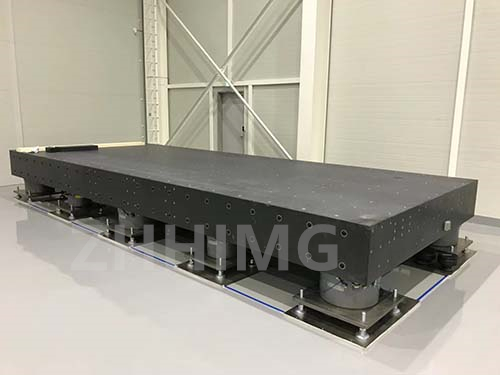Granite, as a material widely used in construction, decoration, precision instrument bases and other fields, its density is an important indicator for measuring quality and performance. When choosing granite materials, it is crucial to understand the key factors that affect their density. The following will elaborate on it in detail for you.
I. Mineral Composition
Granite is mainly composed of minerals such as quartz, feldspar and mica. The crystal structure, content and type of these minerals all have a significant impact on density. The crystal structures of quartz and feldspar are relatively compact, and their densities are relatively high. When the content of these two minerals in granite is high, the overall density will also increase accordingly. For instance, some varieties of granite rich in quartz and feldspar usually have a relatively high density. On the contrary, the crystal structure of mica is relatively loose. If the mica content in granite is relatively high, it will lead to a decrease in its density. In addition, granite containing more minerals with relatively high molecular weights such as iron and magnesium often has a higher density. Granite, which is rich in silicate minerals, has a relatively lower density.
Ii. Particle Size and Structure
Particle size
The finer the granite particles are, the tighter they are piled up, and the fewer the internal voids there are, which leads to an increase in the mass per unit volume and a higher density. Conversely, for coarse-grained granite, the particles are difficult to be closely packed together and there are many voids, resulting in a relatively low density.
Degree of structural tightness
Granite with a compact structure has mineral particles that are closely combined with almost no obvious voids. This structure helps to increase density. However, the loosely structured granite, due to the loose combination between particles, has a large space and naturally has a lower density. For instance, granite with a dense structure formed through special geological processes has a significantly different density compared to its loose-structured counterpart.
Iii. Degree of Crystallization
During the formation of granite, as temperature and pressure change, mineral crystals will gradually crystallize. Granite with a high degree of crystallization has more orderly and compact crystal arrangement, and the gaps between crystals are smaller. Therefore, it has a greater mass per unit volume and a relatively higher density. Granite with a low degree of crystallization has a more disordered crystal arrangement and larger gaps between the crystals, resulting in a relatively lower density.
Iv. Pores and Cracks
During the formation and mining of granite, pores and cracks may occur. The existence of these voids means that there is no solid material filling in this part, which will reduce the overall mass of the granite and thereby lower its density. The more pores and cracks there are, the larger their size and the wider their distribution, the more obvious the reduction effect on density will be. Therefore, when choosing granite materials, observing whether there are obvious pores and cracks on its surface can be used as a reference factor for evaluating its density.
V. Forming the Environment
Different geological environmental conditions can lead to differences in the distribution and content of minerals in granite, thereby affecting its density. For instance, granite formed under high-temperature and high-pressure conditions has more complete mineral crystallization, a more compact structure, and a possibly higher density. The density of granite formed in a relatively mild environment may vary. In addition, environmental factors such as temperature, pressure and moisture can also affect the structure and mineral composition of granite, indirectly influencing its density.
Vi. Processing Methods
The methods used in the mining process, such as blasting mining, may cause microscopic cracks inside the granite, affecting its structural integrity and subsequently having a certain impact on its density. The crushing, grinding and other methods during the processing can also change the particle state and structure of granite, thereby affecting its density. During transportation and storage, improper packaging methods or harsh storage environments may cause granite to be squeezed, collided or eroded, which may also affect its density.
In conclusion, when choosing granite materials, it is necessary to comprehensively consider the various factors that affect density mentioned above in order to accurately evaluate their performance and select the most suitable granite material for specific application scenarios.
Post time: May-19-2025

